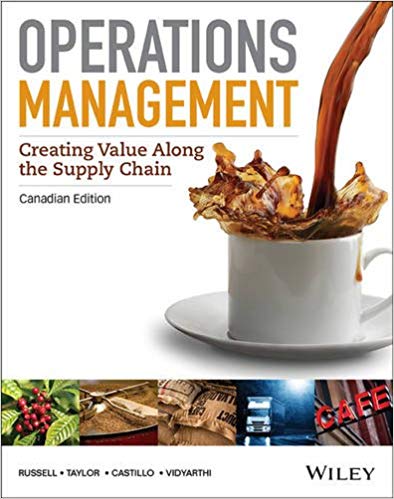Question
Read the case study below and answer all the questions in this section. MAKING BETTER DECISIONS ABOUT THE RISKS OF CAPITAL PROJECTS Never is the
Read the case study below and answer all the questions in this section.
MAKING BETTER DECISIONS ABOUT THE RISKS OF CAPITAL PROJECTS
Never is the fear factor higher for managers than when they are making strategic investment decisions on multibillion-dollar capital projects. With such high stakes, we have seen many managers prepare elaborate financial models to justify potential projects. But when it comes down to the final decision, especially when hard choices need to be made among multiple opportunities, they resort to less rigorous meansarbitrarily discounting estimates of expected returns, for example, or applying overly broad risk premiums. There are more transparent ways to bring assessments of risk into investment decisions. Consultants have found that some analytical tools commonly employed by oil and gas companies can be particularly useful for players in other capital-intensive industries, such as those investing in projects with long lead times or those investing in shorter-term projects that depend on the economic cycle. The result can be a more informed, data-driven discussion on a range of possible outcomes. Of course, even these tools are subject to assumptions that can be speculative. But the insights they provide still produce a more structured approach to making decisions and a better dialogue about the trade-offs. Some of the tools that follow may be familiar to academics and even some practitioners. Many companies use a subset of them in an ad hoc fashion for particularly tricky decisions. The real power comes from using them systematically, however, leading to better decisions from a more informed starting point: a fact-based depiction of how much a companys current performance is at risk; a consistent assessment of each projects risks and returns; how those projects compare; and how current and potential projects can be best combined into a single portfolio. Companies evaluating a new investment project sometimes rush headlong into an assessment of the risks and returns of the project alone without fully understanding the sources and magnitude of the risks they already face. This is not surprising, perhaps, since managers naturally feel they know their own business. However, it does undermine their ability to understand the potential results of new investments. Even a first-class evaluation of a new project only goes so far if managers cant compare it with the status quo or gauge the incremental risk impact. Consider, for example, what happened when managers at one North American oil company were evaluating a new investment. When they quantified the companys existing risk from commodity-price uncertainty, transport congestion, and regulatory developments, they realized their assumptions were overly optimistic about future cash flow in the new investment. In fact, in a range of possible outcomes, there was only a 5 percent chance that performance would meet their base-case projections. Moreover, once they mapped likely cash flows against capital requirements and dividends, managers were alarmed that they had only a 5 percent chance of meeting their capital needs before the projects fourth year and on average wouldnt meet them until year six. Fortunately, managers were able to put the insight to good use; they modified their strategic plan to make it more resilient to risk. Managing risk (and return) in capital-project and portfolio decisions will always be a challenge. But with an expanded set of tools, it is possible to focus risk-return decisions and enrich decision-making, launching a dialogue about how to proactively manage those risks that matter most in a more timely fashion.
QUESTION 2 (20 marks)
As a recently hired consulting engineer you have been tasked by your project manager Keith Boyido, to compile a report to the executive leadership of the organisation motivating for funds to be made available for project risk management purposes. To ensure that this request is positively acknowledged discuss the contents of your report.
Step by Step Solution
There are 3 Steps involved in it
Step: 1

Get Instant Access to Expert-Tailored Solutions
See step-by-step solutions with expert insights and AI powered tools for academic success
Step: 2

Step: 3

Ace Your Homework with AI
Get the answers you need in no time with our AI-driven, step-by-step assistance
Get Started


